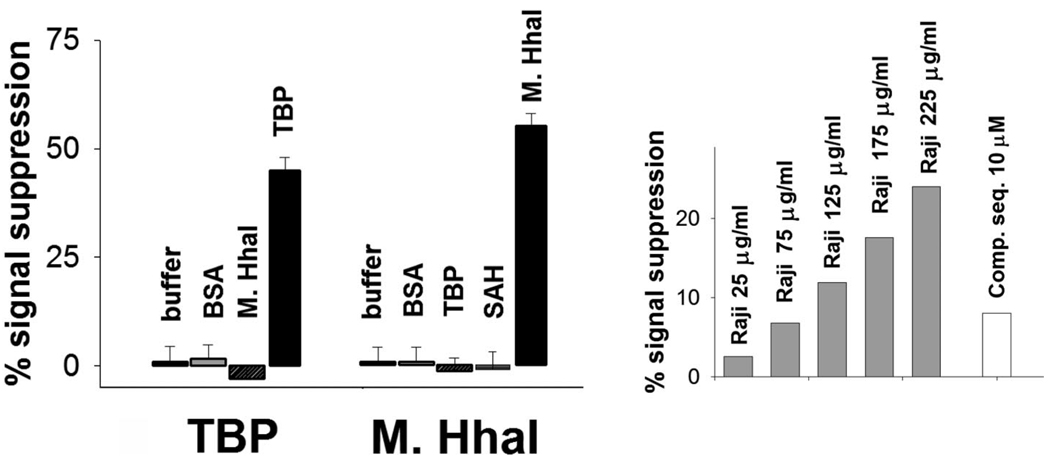Figure 7.
DNA binding protein sensors are as specific as the DNA probes from which they are fabricated. (Left) For example, no significant cross-reactivity is observed between the two sensors directed against double-strand binding proteins in the presence of 1.5 µM BSA and saturating concentrations of the non-targeted double-strand binding protein (80 nM M.HhaI or 10 nM TBP). (Right) Likewise our sensors are also effective in rejecting false positives arising because of interferents and perform well when challenged with realistically complex sample matrixes. For example, we can detect exogenous level of RPA in crude Raji nuclear extracts and partially restore initial signal by adding high concentration of a competitor sequence (polyT-70).

